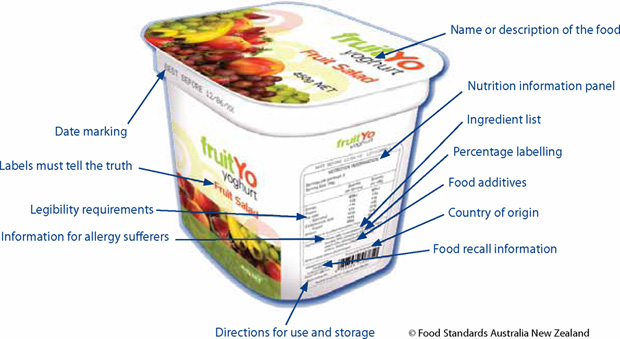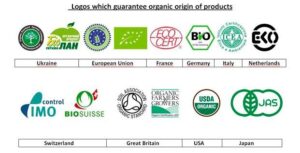38 australian food labels explained
Plain English Allergen Labelling (PEAL) and FoodWorks - Xyris Changes are coming for labelling allergens on your food products. After several years of consultation, on 25 February 2021 the Food Standards Code was updated with new requirements for labelling allergens in food. Before compliance with the Plain English Allergen Labelling (PEAL) requirements becomes mandatory, there is a 3-year transition period. How to Understand and Use the Nutrition Facts Label | FDA For certain products that are larger than a single serving but that could be consumed in one sitting or multiple sittings, manufacturers will have to provide "dual column" labels to indicate the...
Health Star Rating - Health Star Rating The Health Star Ratings are voluntary and range from ½ to five stars. The more stars the healthier. Read more Health Star Ratings range from half a star to five stars. The more stars the healthier. Health Star Ratings are calculated using strict guidelines.
Australian food labels explained
Best before and use by explained | NT.GOV.AU Best before and use by explained All pre-packaged food that is expected to stay in premium condition for two years or less must be marked with information about: how long the food should retain maximum quality if stored correctly and/or when the food was packed. Information about date marks How to Import Food Into Australia: The Process Explained ... A 'lot' refers to a quantity of food prepared from a particular packing or preparation unit during a certain period. Lots are identified by 'codes' generated by the manufacturer. These will be placed into a list of codes, called the 'Lot Code List'. Labelling your Food Import Labelling - Food Standards The Food Standards Code includes the general labelling and information requirements (Chapter 1 of the Code) that are relevant to all foods, and sets out which requirements apply in different situations (for example food for retail sale, food for catering purposes, or an intra-company transfer). The Code also includes specific labelling and ...
Australian food labels explained. How to read a food label - Healthy Kids How to read a food label. Choosing foods in the supermarket can be difficult, so here's a handy guide to help you make decisions. Organic Labelling Explained - NASAA Organic There are six certification bodies in Australia approved by the Commonwealth Department of Agriculture to certify to the National Standard for Organic & Biodynamic Production. Each of these accredited certifying bodies has a unique certification label consisting of the Label and a certification number which is provided to certified organic operators. How to Read Nutrition Facts | Food Labels Made Easy - YouTube To support our channel and level up your health, check out:Our Fast Weight Loss Course: B... How to understand food labels - Eat For Health The Nutrition Information Panel on a food label offers the simplest and easiest way to choose foods with less saturated fat, salt (sodium), added sugars and kilojoules, and more fibre. It can also be used to decide how large one serve of a food group choice or discretionary food would be and whether it's worth the kilojoules.
Food labels explained - Go For Fit Reading food labels is important if you're interested in what ingredients / additives you're buying and feeding yourself and/or your family. Besides the expiry date, the Australian Government requires all processed foods to have full ingredient lists, nutritional breakdown and allergen information on the packaging. But, do you know what you're looking at on the… PDF how to understand food labels - Eat For Health Generally choose foods with less than 10g per 100g. For milk, yogurt and icecream, choose less than 2g per 100g. For cheese, choose less than 15g per 100g. Saturated Fat Aim for the lowest, per 100g. Less than 3g per 100g is best. Sodium (Salt) Choose lower sodium options among similar foods. Food with less than 400mg per PDF Standard 1.2.1 Requirements to have labels or otherwise ... Note A food for sale in Australia may be required to bear a label under this section, even if it is not required under section 1.2.1—6. (2) This section does not apply to a food that: (a) is sold to the public by any of the following: (i) a restaurant; (ii) a canteen; (iii) a school; (iv) a caterer; (v) a self-catering institution; Food labels explained | SA Health Essentially food labels are there to provide us with basic information about what is in the food we eat. All food labels must conform to the labelling provisions of the Australia New Zealand Food Standards Code including misleading information. Within South Australia, SA Health enforces this. Why the need for food labels. Food labels provide information to help us make healthier and safer food choices. They: tell us which nutrients, in what amounts, are in a product
PDF how to understand food labels - Eat For Health Generally choose foods with less than 10g per 100g. For milk, yogurt and icecream, choose less than 2g per 100g. For cheese, choose less than 15g per 100g. Saturated Fat Aim for the lowest, per 100g. Less than 3g per 100g is best. Sodium (Salt) Choose lower sodium options among similar foods. Food with less than 400mg per Understanding food labels fact sheet - NDSS Food labels will typically include a nutrition information panel, list of ingredients, the 'use by' or 'best before' date and identify potential food allergens and additives. Food labels also tell you the amount of carbohydrates (carbs) you eat and drink. This can help you manage your blood glucose levels. Ingredient lists and percentage labelling - Food Standards Most packaged foods have to carry labels which show the percentage of the key or characterising ingredients or components in the food. This allows you to compare similar products. The characterising ingredient for strawberry yoghurt would be strawberries and the label would say, for example, 9% strawberries. Nutrition information panels - Food Standards Nutrition information panels (NIP) on food labels provide information on the average quantity of energy in kilojoules or in kilojoules and kilocalories and these nutrients: protein; fat; saturated fat; carbohydrate; sugars; sodium - a component of salt. A NIP will include information about other nutrients if a claim is made.
Food labels - Better Health Channel Food labels carry useful information to help you make informed choices about what you and your family eat and drink. Most packaged foods are required to have a label with this information, but the information required depends on the food type. The food label will tell you all sorts of information, including: what the food is manufacturer's details
Country of origin labelling explained This label will appear on non-priority food items and has text stating the country of origin. The difference between priority and non-priority food is all about how processed an item is. A food will be a priority item unless it is in one of these non-priority categories: seasonings, confectionery, biscuits and snack food, bottled water, soft drinks and sports drinks, tea and coffee, and alcoholic beverages.
Labelling - Food Standards The Food Standards Code includes the general labelling and information requirements (Chapter 1 of the Code) that are relevant to all foods, and sets out which requirements apply in different situations (for example food for retail sale, food for catering purposes, or an intra-company transfer). The Code also includes specific labelling and ...
Food labelling: Government seeks public opinion on six different Australian Made designs - ABC ...
How to Import Food Into Australia: The Process Explained ... A 'lot' refers to a quantity of food prepared from a particular packing or preparation unit during a certain period. Lots are identified by 'codes' generated by the manufacturer. These will be placed into a list of codes, called the 'Lot Code List'. Labelling your Food Import
Best before and use by explained | NT.GOV.AU Best before and use by explained All pre-packaged food that is expected to stay in premium condition for two years or less must be marked with information about: how long the food should retain maximum quality if stored correctly and/or when the food was packed. Information about date marks

Australia's food and nutrition 2012: in brief, In brief - Australian Institute of Health and Welfare








Post a Comment for "38 australian food labels explained"